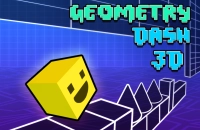Dinosaur Game
Dinosaur Game
Connecting to game server...
0% complete

Dinosaur Game
Click to start playing
🕹️ You May Also Like












Dinosaur Game
Chrome's beloved offline T-Rex runner featuring simple yet addictive endless gameplay. Jump over cacti, duck under pterodactyls, and survive the desert.
The Dinosaur Game, also known as Chrome Dino, is the beloved endless runner that appears when your internet connection fails. Control a pixelated T-Rex as it runs through a desert landscape, jumping over cacti and ducking under flying pterodactyls. The simple yet addictive gameplay has made this one of the most played games in the world, even though it was originally designed as an Easter egg.
🎮 How to Play
- 1Space or Up arrow to jump
- 2Down arrow to duck
- 3Avoid cacti and pterodactyls
💡 Game Tips
- 💡Time your jumps carefully
- 💡Duck under flying obstacles
- 💡Game speed increases over time
- 💡Focus on rhythm and timing
📚Complete Strategy Guide
Master Dinosaur Game with our comprehensive guide and pro tips
The Chrome Dinosaur Game, also known as T-Rex Runner, has become an iconic browser game that millions encounter during internet outages. What seems like a simple endless runner actually contains layers of strategy, timing mechanics, and scoring optimization that separate casual players from true masters. This comprehensive guide will teach you everything you need to know to achieve high scores and master this deceptively challenging game.
Understanding the Game Mechanics
Basic Controls and Movement
The Chrome Dinosaur Game uses the simplest possible control scheme:
- Spacebar or Up Arrow: Jump over obstacles
- Down Arrow: Duck under flying pterodactyls (appears after 450 points)
- Mouse Click: Alternative jump control on some versions
The T-Rex Character
Your dinosaur character has specific movement properties:
- Running Speed: Constantly increases as your score grows
- Jump Height: Fixed arc that cannot be modified mid-air
- Jump Duration: Approximately 0.5 seconds from takeoff to landing
- Ducking: Reduces hitbox height but maintains running speed
Obstacle Types and Behaviors
Ground Obstacles:
- Small Cacti: Single narrow cactus requiring precise timing
- Large Cacti: Taller obstacles needing earlier jumps
- Double Cacti: Two cacti close together, requiring sustained jump
- Triple Cacti: Rare formation demanding perfect timing
Flying Obstacles (450+ points):
- High Pterodactyls: Fly at head height, requiring ducking
- Low Pterodactyls: Fly at ground level, can be jumped over or ducked under
- Variable Heights: Some pterodactyls fly at middle heights requiring jumps
Early Game Strategy (0-450 Points)
Building Your Foundation
The first 450 points serve as your training ground:
Focus Areas:
- Establish rhythm - Find your comfortable jumping pattern
- Practice timing - Learn the precise moment to jump for each cactus type
- Build confidence - Don't overthink, trust your reflexes
- Stay relaxed - Tension leads to mistimed jumps
Optimal Jumping Technique
Small Cacti:
- Jump when the cactus is approximately 2 T-Rex lengths away
- Land just after clearing the obstacle
- Avoid "panic jumping" too early
Large Cacti:
- Begin jump slightly earlier than small cacti
- The taller height requires more anticipation
- Practice the timing difference until it becomes instinctive
Double and Triple Cacti:
- Start your jump when the first cactus is 2-3 lengths away
- Your arc will carry you over the entire formation
- Never attempt multiple jumps for grouped obstacles
Mid Game Mastery (450-2000 Points)
Introduction of Pterodactyls
At 450 points, flying obstacles join the challenge:
High Pterodactyls:
- Duck timing: Press down arrow when pterodactyl is 2-3 lengths away
- Hold briefly: Keep ducking until the obstacle passes overhead
- Quick recovery: Release immediately to prepare for ground obstacles
Low Pterodactyls:
- Jump option: Treat like a ground obstacle and jump over
- Duck option: Same technique as high pterodactyls
- Choose wisely: Jumping is usually safer but requires more energy
Mixed Obstacle Combinations
Cactus followed by Pterodactyl:
- Land from cactus jump and immediately assess pterodactyl height
- Practice smooth transitions between jumping and ducking
- Maintain rhythm despite the added complexity
Pterodactyl followed by Cactus:
- Complete your duck/jump for the pterodactyl
- Quickly refocus on ground-level timing for the cactus
- Don't let air obstacles disrupt your ground obstacle timing
Speed Adaptation
As the game accelerates:
- Anticipate earlier - Increased speed requires earlier reactions
- Trust muscle memory - Let practiced timing guide you
- Stay calm - Speed increases gradually, not dramatically
- Maintain rhythm - Don't change your fundamental approach
Advanced High-Score Techniques (2000+ Points)
Perfect Timing Windows
At higher speeds, timing becomes critical:
Frame-Perfect Jumping:
- Study the exact pixel where each obstacle type requires a jump
- Practice until timing becomes completely automatic
- Develop "obstacle recognition" skills for split-second decisions
Energy Conservation:
- Only jump when absolutely necessary
- Avoid unnecessary jumps that disrupt rhythm
- Stay grounded as much as possible to maintain control
Pterodactyl Height Mastery
Height Recognition:
- High: Definitely duck, no other option
- Medium: Can jump or duck, choose based on upcoming obstacles
- Low: Usually jump, but ducking works if you're confident
Strategic Decision Making:
- Consider what's coming next when choosing jump vs. duck
- If unsure about pterodactyl height, defaulting to jump is often safer
- Practice makes these decisions instinctive rather than conscious
Obstacle Sequence Reading
Pattern Recognition:
- Learn common obstacle sequences that repeat
- Develop strategies for challenging combinations
- Anticipate potential "trap" sequences that catch players off-guard
Lookahead Strategy:
- Always scan ahead for the next 2-3 obstacles
- Plan your actions based on the sequence, not individual obstacles
- Prepare for rare but dangerous triple cactus formations
Score Optimization Strategies
Point Accumulation Understanding
Scoring System:
- 1 point per unit of distance traveled
- 10 points for every pterodactyl successfully avoided (bonus)
- No bonus for jumping over cacti (just survival)
- Consistent progression - no multipliers or power-ups
Maximizing Your Run Length
Endurance Techniques:
- Stay relaxed - Physical tension leads to mistimed inputs
- Breathe regularly - Don't hold your breath during difficult sections
- Blink consciously - Prevent eye strain during long runs
- Maintain posture - Good positioning improves reaction time
Mental Strategies:
- Focus on process - Think about technique, not score
- Accept mistakes - Don't let close calls throw off your rhythm
- Stay present - Don't think about how far you've come or might go
- Enjoy the challenge - Frustration leads to poor performance
Breaking Score Barriers
Common Plateau Points:
- 500 points - Pterodactyl adjustment period
- 1000 points - First major speed increase adaptation
- 2000 points - High-speed precision requirements
- 5000+ points - Elite-level consistency demands
Breakthrough Strategies:
- Focused practice sessions - Spend time specifically at each plateau level
- Analyze failures - Understand exactly why you died to improve
- Incremental goals - Aim for small improvements rather than dramatic jumps
- Patience and persistence - High scores require many attempts
Common Mistakes and Solutions
Timing Errors
Problem: Jumping Too Early
- Symptom: Landing on or just before obstacles
- Solution: Practice waiting longer, use visual landmarks
- Training: Focus on later timing until it becomes natural
Problem: Jumping Too Late
- Symptom: Not clearing obstacles, hitting them while jumping
- Solution: Start jumps earlier, improve reaction time
- Training: Practice with slower-paced games or videos
Panic Responses
Problem: Rapid-Fire Jumping
- Symptom: Multiple quick jumps when encountering difficult sections
- Solution: Trust your timing, one jump per obstacle group
- Training: Practice staying calm during pressure situations
Problem: Ducking When Should Jump
- Symptom: Ducking for ground obstacles or high pterodactyls
- Solution: Improve obstacle recognition speed
- Training: Focus on quick height assessment for pterodactyls
Rhythm Disruption
Problem: Overthinking
- Symptom: Good performance degrading when paying too much attention
- Solution: Trust muscle memory, play more instinctively
- Training: Practice until responses become automatic
Problem: Speed Adjustment Issues
- Symptom: Good performance at slow speeds, struggling as speed increases
- Solution: Gradual adaptation, don't fight the increased pace
- Training: Focus on maintaining rhythm rather than changing technique
Physical and Mental Preparation
Optimal Playing Environment
Hardware Setup:
- Stable keyboard - Ensure consistent key response
- Good lighting - Prevent eye strain and improve obstacle visibility
- Comfortable seating - Maintain alertness without physical distraction
- Minimal distractions - Remove external interruptions
Browser Optimization:
- Full-screen mode - Maximize visibility and focus
- Close other tabs - Prevent performance issues
- Disable notifications - Avoid mid-game interruptions
- Stable internet - Although the game works offline, stability helps
Pre-Game Preparation
Warm-Up Routine:
- Finger exercises - Stretch and flex hands and wrists
- Eye movement - Look left, right, up, down to prepare vision
- Deep breathing - Calm nerves and improve focus
- Quick practice runs - Get comfortable with current game rhythm
Mental Preparation:
- Set realistic goals - Aim for personal bests, not world records
- Positive mindset - Focus on enjoyment and improvement
- Patience acceptance - Acknowledge that high scores take many attempts
- Learning attitude - View failures as learning opportunities
Advanced Training Techniques
Deliberate Practice Methods
Skill Isolation:
- Cactus-only practice - Focus purely on ground obstacle timing
- Pterodactyl recognition - Practice identifying heights quickly
- Speed adaptation - Start runs at different score levels
- Endurance building - Focus on maintaining performance over time
Weakness Targeting:
- Identify failure patterns - Track common ways you die
- Focused improvement - Spend extra time on weak areas
- Progress measurement - Monitor improvement in specific skills
- Balanced development - Don't neglect strengths while improving weaknesses
Performance Analysis
Session Review:
- Record scores - Track progress over time
- Note failure types - Understand patterns in your mistakes
- Identify peak performance times - Play when you're naturally sharp
- Recognize fatigue signs - Know when to take breaks
Long-Term Development:
- Weekly averages - Track overall improvement trends
- Personal best progression - Celebrate incremental improvements
- Skill maintenance - Regular practice to maintain abilities
- Goal adjustment - Update targets as you improve
Psychology of High-Score Gaming
Managing Pressure
High-Score Anxiety:
- Accept the pressure - Some nerves are normal and can improve focus
- Focus on process - Think about technique rather than score
- Breathing control - Use deep breathing to manage anxiety
- Positive self-talk - Encourage yourself rather than criticizing
Flow State Achievement:
- Clear goals - Know exactly what you're trying to accomplish
- Immediate feedback - Use visual and audio cues for instant information
- Challenge-skill balance - Play at the edge of your abilities
- Complete concentration - Eliminate mental distractions
Motivation Maintenance
Long-Term Engagement:
- Variety in practice - Mix focused training with casual play
- Social elements - Share scores and compete with friends
- Achievement recognition - Celebrate personal milestones
- Fun factor - Remember that games should be enjoyable
Dealing with Plateaus:
- Patience during stagnation - Improvement isn't always linear
- Alternative approaches - Try different strategies or practice methods
- Break taking - Sometimes rest improves performance more than practice
- Perspective maintenance - Remember why you started playing
Technical Understanding
Game Physics and Limitations
Jump Arc Properties:
- Fixed trajectory - Cannot change direction or speed mid-air
- Consistent timing - Jump duration remains constant regardless of speed
- Collision detection - Understand exactly where hitboxes interact
- Speed scaling - How increased game speed affects obstacle timing
Obstacle Generation:
- Random placement - Obstacles appear at intervals with some randomness
- Minimum distances - Gaps between obstacles ensure the game remains fair
- Maximum difficulty - The game reaches a speed cap eventually
- Pattern limitations - Certain impossible combinations never appear
Browser and Platform Differences
Chrome vs. Other Browsers:
- Original version - Chrome has the definitive implementation
- Timing differences - Other browsers may have slightly different physics
- Performance variations - Frame rate can affect timing precision
- Feature availability - Some versions lack certain obstacle types
Mobile vs. Desktop:
- Touch controls - Tap to jump, swipe down to duck
- Screen size - Smaller screens may make timing more challenging
- Performance considerations - Mobile devices may have inconsistent frame rates
- Battery impact - Longer sessions may affect device performance
Conclusion: Mastering the Endless Run
The Chrome Dinosaur Game proves that simple concepts can hide remarkable depth. What appears to be a basic jumping game actually rewards precision timing, pattern recognition, strategic thinking, and mental discipline. Success comes from understanding the game's mechanics, developing reliable techniques, and maintaining the psychological composure necessary for long, high-scoring runs.
Key Success Principles:
- Master the fundamentals - Perfect timing for each obstacle type
- Stay calm under pressure - High scores require mental discipline
- Practice consistently - Skills require regular reinforcement
- Learn from failures - Each death teaches something about improvement
- Enjoy the process - Frustration undermines performance
Your Development Path:
- Foundation building - Master basic jumping and ducking
- Speed adaptation - Learn to maintain timing as speed increases
- Pattern recognition - Develop quick responses to obstacle combinations
- Endurance development - Build stamina for longer high-score runs
- Mental mastery - Achieve consistent performance under pressure
Final Thoughts: The Chrome Dinosaur Game may have been designed as a simple offline diversion, but it has evolved into a legitimate test of gaming skill and mental fortitude. Whether you're aiming to beat your personal best or competing for world records, remember that every expert was once a beginner who kept trying.
The prehistoric endless run awaits your mastery. Will you achieve a score worthy of the age of dinosaurs?